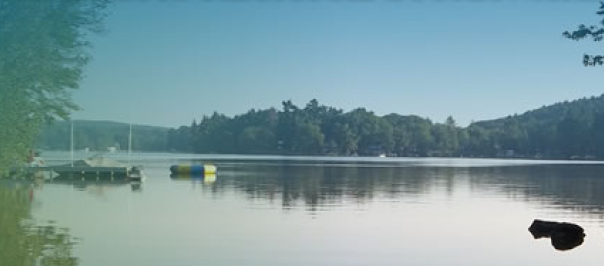What We Have Done
Working closely with our engineering consultant, Tata & Howard, Inc., and other project partners, the Coalition has completed tasks in year one to innovatively address stormwater management through collaboration. A brief description of the tasks is included below. We will post appropriate documents on this website as they are finalized.
Links to a Brief Description of each Task
- Developed a Stormwater Pollution Prevention Plan (SWPPP) Template
- Developed a Methodology to Reach a Common Benchmark
- Developed Training and Outreach Materials for Town Personnel and Volunteers
- Developed an Educational Website
- Developed a Sump Pump Discharge Policy
- Developed a Salt/Sand Application Calibration
- Created a Stormwater Best Management Practices (BMPs) Toolbox
- Developed a Request for Proposals for General Consulting Services
- Developed an Online Database for Regional Management
- Stormwater System Mapping Integration
- Developed a Cost/Benefit Analysis of a Regional Stormwater Laboratory
- Developed a Drainage Extension Approach that Mirrors Inflow Data and Priorities
- Developed Facility-Specific Figures for Incorporation into the Stormwater Pollution Prevention Plan (SWPPP) Template
- Illicit Discharge Detection and Elimination (IDDE) Documentation Packet
Developed a Stormwater Pollution Prevention Plan (SWPPP) Template
A SWPPP identifies potential pollution sources from activities and materials that are common at facilities owned or operated by municipalities, and outlines practices to reduce the potential for this pollution to enter stormwater. The SWPPP template for municipal facilities that was developed under this project addresses specific tasks common to most of the participating communities, such as storage of materials, site inspection practices, spill prevention and cleanup, and Standard Operating Procedures.
Developed a Methodology to Reach a Common Benchmark
Early in the process, the Coalition members realized the value of a consistent approach to such tasks as stormwater outfall inspection, catch basin cleaning and inspection, and mapping. We developed Standard Operating Procedures for 15 common practices and activities. The standard methodology provides all member communities with a consistent approach to completing these activities in a way that is consistent with the MS4 Permit and results in efficient operation of the stormwater system in each community.
Developed Training and Outreach Materials for Town Personnel and Volunteers
The Materials developed under this project are training methods designed to provide a summary of the goals of the MS4 Permit. Individual modules are targeted toward municipal personnel and elected officials, staff at Department of Public Works or Highway garages or sites, and volunteers assisting in a community’s stormwater management efforts. Other modules are aimed at introducing young people to the environmental issues associated with stormwater. Finally, a training module was developed to review the objectives and highlights of the 15 Standard Operating Procedures.
Developed an Educational Website
This educational website was developed under the project. The website aggregates information on the group’s stormwater management efforts, and has been developed to educate residents, municipal officials, contractors, and others, and also demonstrates the Coalition’s objectives and compliance to regulatory agencies. It is kept up-to-date by members of the Coalition.
Developed a Sump Pump Discharge Policy
Sump pumps from private properties can introduce pollution into engineered stormwater systems, and also reduce capacity in the pipes for stormwater. However, sump pumps are generally prohibited by law from discharging to sanitary sewer systems, and the members of the Coalition were aware that in some areas, the storm drain system represents the only solution to prevent damage to private properties. The sump pump discharge policy addresses the concerns of managing private stormwater entering municipal stormwater systems and lays out an approach that can be applied on a regional basis.
Developed a Salt/Sand Application Calibration
Salt and other materials used for deicing of roadways can create chloride impairments in surface waters, which states that neighbor Massachusetts are currently evaluating. Rather than wait for mandatory regulatory action, our group developed a practical decision tree to be used by municipal personnel. This tool allows for the review and evaluation of multiple types of roadway treatment materials in a way that is geared toward surface water protection- maintaining safe driving conditions while reducing chloride loadings to our local waterways.
Created a Stormwater Best Management Practices (BMPs) Toolbox
Best Management Practices are methods to reduce stormwater (and the pollution in it) that runs off a developed property, and can include Low Impact Development tools like rain gardens. The Coalition members recognized the added benefit of using infiltration, where appropriate, to provide recharge of groundwater aquifers with treated stormwater. The toolbox developed in this project summarizes BMPs that are appropriate for residential and small-scale commercial construction, and includes technical data, design factors, and construction limitations to facilitate selection of appropriate stormwater management technologies.
Developed a Request for Proposals for General Consulting Services
The joint RFP for services evaluated the common priorities of the member communities that are typically completed by a third party, such as an engineering consulting firm, and provided a cost benefit to each member of the Coalition based on economy of scale.
Developed an Online Database for Regional Management
The online database, designed for joint access by all members of the Coalition, allows members to document a variety of types of inspections and to evaluate surface water quality and stormwater on a regional basis. Members can access the database forms online using tablet computers. Data is geographically-referenced and tied directly to the mapping system described below.
Stormwater System Mapping Integration
Coalition communities have already completed a substantial amount of mapping of stormwater outfalls and infrastructure, but each community could access only its own mapping information. In this task, we integrated mapping from all Coalition members into a single GIS-based system, accessible online in a secure environment. Coalition members are now able to see the extent of stormwater infrastructure on a regional basis. The system allows for easy expansion as more mapping activities are completed in each community.
Developed a Cost/Benefit Analysis of a Regional Stormwater Laboratory
This task identified the estimated costs to retrofit the existing laboratory for use based on the anticipated requirements in the new Massachusetts MS4 Permit. Costs for alternative labs in the area including commercial labs and the lab at the Upper Blackstone Water Pollution Abatement District were also considered.
Developed a Drainage Extension Approach that Mirrors Inflow Data and Priorities
This document provides guidance to the Coalition communities on the development of Capital Improvement Plans (CIPs) or other planning documents to address the acceptance of identified inflow into the storm drainage system. This function of the storm drainage system can then be incorporated as one of the factors used in determining priorities for extending drainage systems or expanding the capacity of an existing drainage system to accept inflow removed from sanitary sewer systems.
Developed Facility-Specific Figures for Incorporation into the Stormwater Pollution Prevention Plan (SWPPP) Template
This task included the development of facility-specific site plan figures for incorporation into the Coalition's SWPPP documents.
Illicit Discharge Detection and Elimination (IDDE) Documentation Packet
This documentation packet serves as a basis for educational opportunities within different departments in a community, to encourage cross-departmental review of IDDE needs and to support planning and administrative efforts needed to implement IDDE effectively to maintain compliance.








